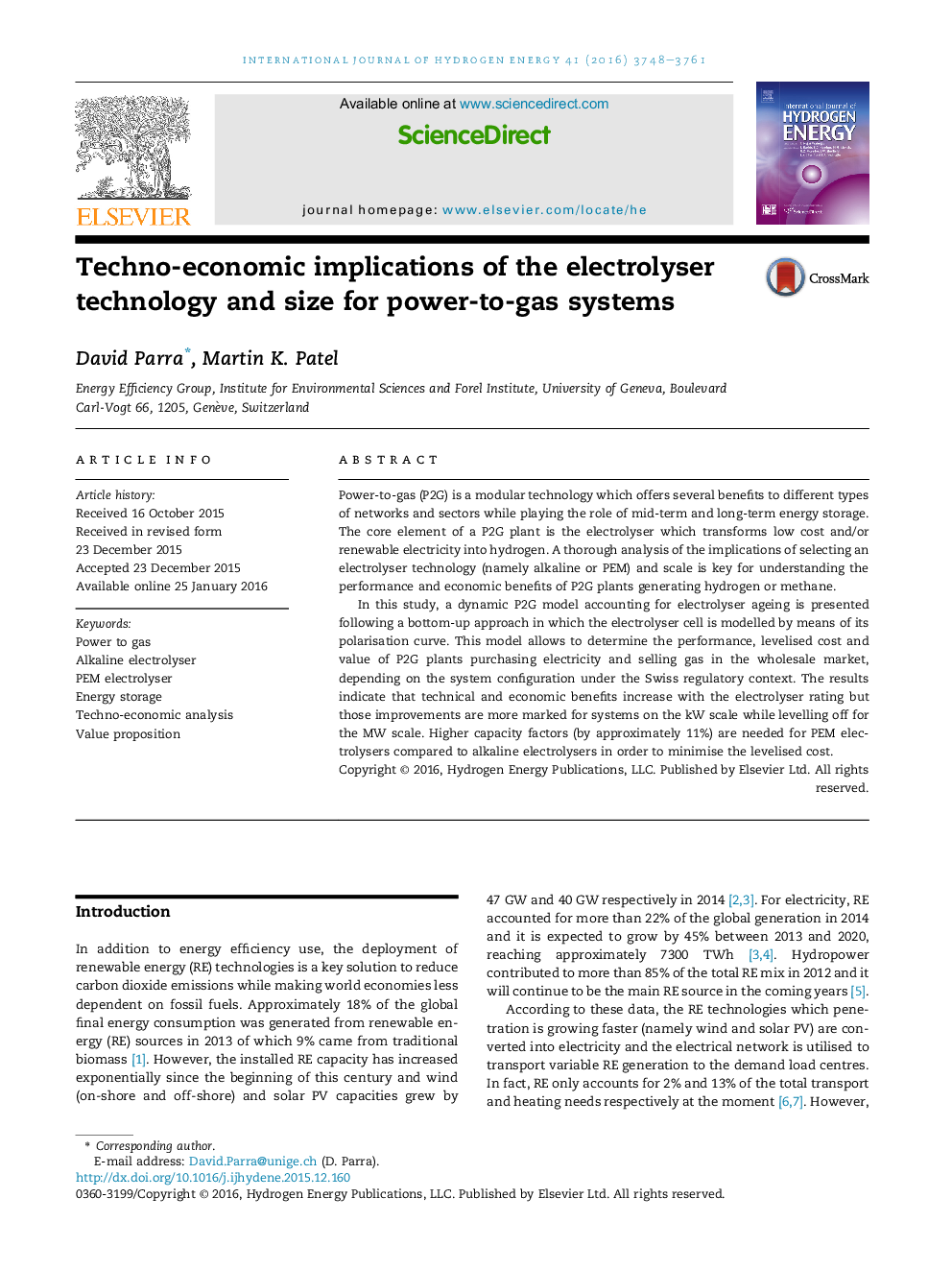| Article ID | Journal | Published Year | Pages | File Type |
|---|---|---|---|---|
| 1277904 | International Journal of Hydrogen Energy | 2016 | 14 Pages |
•Alkaline versus PEM and hydrogen versus methane are compared for power-to-gas.•Wholesale electricity market operation was optimised for each configuration.•Alkaline electrolysers operated with 11% lower capacity factor than PEM systems.•The levelised cost of PEM systems was 15% higher than alkaline systems.•Internal rate of return values where higher than discount rate for the MW scale.
Power-to-gas (P2G) is a modular technology which offers several benefits to different types of networks and sectors while playing the role of mid-term and long-term energy storage. The core element of a P2G plant is the electrolyser which transforms low cost and/or renewable electricity into hydrogen. A thorough analysis of the implications of selecting an electrolyser technology (namely alkaline or PEM) and scale is key for understanding the performance and economic benefits of P2G plants generating hydrogen or methane.In this study, a dynamic P2G model accounting for electrolyser ageing is presented following a bottom-up approach in which the electrolyser cell is modelled by means of its polarisation curve. This model allows to determine the performance, levelised cost and value of P2G plants purchasing electricity and selling gas in the wholesale market, depending on the system configuration under the Swiss regulatory context. The results indicate that technical and economic benefits increase with the electrolyser rating but those improvements are more marked for systems on the kW scale while levelling off for the MW scale. Higher capacity factors (by approximately 11%) are needed for PEM electrolysers compared to alkaline electrolysers in order to minimise the levelised cost.
